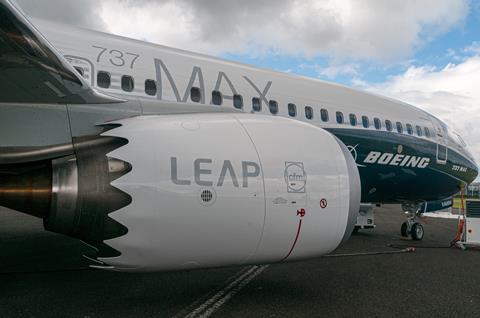GE Aerospace has big plans for the coming years, predicting that demand for engine aftermarket services combined with accelerating new-engine deliveries will push its adjusted operating profit to $10 billion by 2028, up from $5.6 billion in 2023.
Company executives presented those goals on 7 March, roughly one month before parent General Electric plans to spin off its energy division, leaving GE Aerospace as legacy GE’s only remaining business.
But hitting the profit targets will not come easy, as GE Aerospace must overcome formidable internal and supply chain challenges – most notably, widespread shortages of skilled workers.

“We really are at a point in time where demand isn’t our challenge,” Larry Culp, chief executive of GE and subsidiary GE Aerospace, says during an investor day in New York City. He means that consumer demand for air travel, and airline demand new aircraft, has largely rebounded following the Covid-19 pandemic.
The challenge, rather, is overcoming labour shortages up and down the supply chain – shortages that continue affecting production of CFM International Leap turbofans, which GE produces as part of its 50-50 CFM joint venture with Safran Aircraft Engines.
“There’s a lot to talk about every week,” Culp says when asked about supply chain troubles. “It’s not always the same supplier or sub-tier every week.”
The engine maker is seeking to match Airbus’s ambitious goal of boosting production of A320neo-family jets to 75 monthly in 2026. Airbus delivered an average 48 of those jets in 2023.
Boeing has said it intends to be producing 50 737 Max monthly in 2025 or 2026, though the company has lately been hampered by production slowdowns, with analysts estimating it has been finishing only 20-25 737s monthly – perhaps fewer in recent months.
GE Aerospace executives insist they have been aggressively tackling – and fixing – ongoing production issues. Culp also says Leap production has been largely unaffected by Boeing’s quality issues because the aircraft manufacturer has been keeping many suppliers’ rates unchanged.
GE is on the cusp of completing a massive restructuring announced in 2021. It spun off GE HealthCare in 2023, and on 2 April plans to jettison energy division Vernova into a separate public company. At that moment, GE will become GE Aerospace – and aviation will become, essentially, the sole remnant of a once-giant firm with tentacles that once spanned industries.
Culp says the restructuring will enable his team to expand its aerospace focus, possibly through acquisitions. “What we want to do is find businesses that complement – that accelerate – what we are doing at GE Aerospace. That will include looks at the commercial and the defence side of things,” he says.
His team is painting an optimistic financial future.
The company expects to turn a $6-6.5 billion adjusted operating profit this year, up 7-16% from 2023. Of that, it expects operating profits of $6-6.3 billion from its commercial business, and of $1-1.3 billion from its defence unit, offset by about $1 billion in separate corporate-level losses.
Adjusted profits will climb to $7.1-7.5 billion in 2025, and to $10 billion annually in 2028, the company predicts.
Getting there requires GE Aerospace to continue accelerating production of its best-selling Leap turbofans. Leap-1As are one of two Airbus A320neo-family power options, while Leap-1Bs are the only power option for 737 Max.

The engine maker delivered 1,570 Leaps in 2023. It expects to deliver 1,884-1,963 of the turbofans this year (a 20-25% year-on-year bump), and more than 2,000 Leaps annually in 2025, says GE Aerospace Commercial Engines & Services CEO Russell Stokes.
But GE Aerospace’s financial performance relies much more on its aftermarket business, which accounted for about 70% of 2023 revenue.
Stokes notes that new-engine sales generate only about 25% of all revenue GE Aerospace expects to receive from those engines throughout their service lives. Initial shop visits generate another 20%, second shop visits generate 30% and third visits bring in the remaining 25%.
Stokes says GE Aerospace’s services business has enjoyed a recent boost because airlines are operating hundreds of older CFM56 turbofans longer than previously expected, meaning more maintenance revenue. Carriers are keeping ageing jets longer to minimise disruptions caused by new-aircraft delivery delays and by durability issues affecting new-generation engines like Leaps and Pratt & Whitney PW1100Gs.
GE Aerospace is also sitting on a healthy backlog of some 900 orders for its GE9X, which powers Boeing’s 777-9. Boeing expects the Federal Aviation Administration will certificate that jet in time for a 2025 service entry.





























